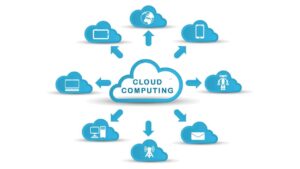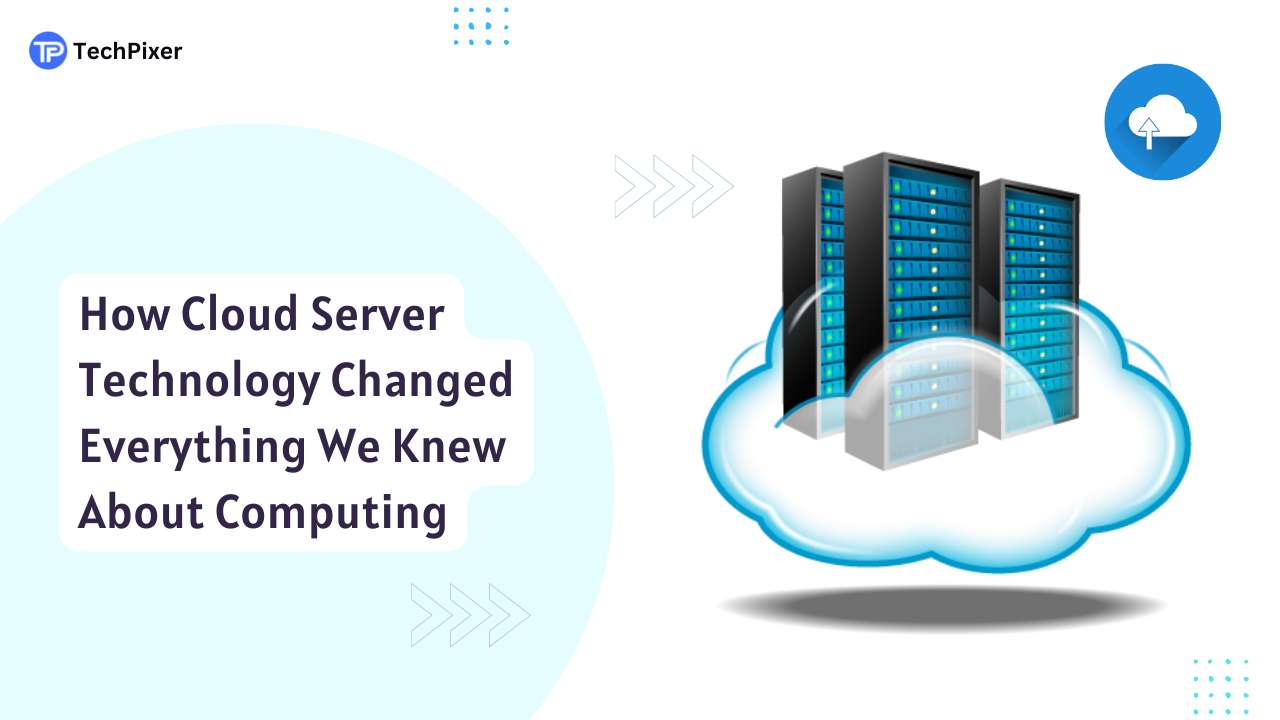In the 21st century, cloud server technology is emerging as a transformative force in the world of technology. This article discusses the historical history, definition, advantages, and different applications of cloud server technology. We will look into its impact on businesses, data security, different industries, future trends, benefits and disadvantages, cost analysis, and many more. Cloud server technology is the game-changer that came from the skies.
Historical Background of Cloud Server Technology
The roots of cloud server technology can be traced back to the early 1960s, with the invention of time-sharing systems. This allowed numerous users to access a single computer simultaneously. Over the years, innovations in networking and virtualization established the stage for the ultimate creation of cloud server technology as we know it today.
What is Cloud Server Technology?
Cloud server technology refers to the supply of computer resources, including servers, storage, databases, networking, and software, through the internet. Instead of relying on physical hardware, users can access these resources remotely from any location around the world. This unique approach eliminates the need for expensive on-site infrastructure and provides for flexible further development.

Benefits and Advantages of Cloud Server Technology
- Scalability: Cloud server technology provides seamless scalability, allowing businesses to easily adjust their computing resources based on demand.
- Cost Efficiency: By leveraging the cloud, businesses can eliminate the need for expensive hardware investments and pay only for the resources they use.
- Flexibility: Cloud server technology enables remote accessibility, empowering users to work anytime, anywhere, using any device with an internet connection.
- Disaster Recovery: Storing data in the cloud ensures its safety and accessibility even in the event of natural disasters or system failures.
- Collaboration: Cloud server technology facilitates collaboration among team members by providing a centralized platform for sharing and accessing files.
Evolution of Cloud Server Technology
Early Development and Pioneers of Cloud Server Technology
- IBM’s VM/370 introduced virtualization, enabling the sharing of computing resources.
- Amazon Web Services (AWS), launched in 2006, provided the first major cloud services platform.
- Other companies, such as Microsoft Azure and Google Cloud Platform, followed suit, revolutionizing the industry.
Major Milestones and Advancements in Cloud Server Technology
- Introduction of Infrastructure as a Service (IaaS), Platform as a Service (PaaS), and Software as a Service (SaaS) models.
- Development of containerization technology, such as Docker and Kubernetes, facilitating efficient deployment and management of applications.
- Integration of serverless computing, where developers focus on writing code while leaving the infrastructure management to the cloud provider.
- Advancements in edge computing, bringing computing power closer to the users and reducing latency.
How Does Cloud Server Technology Function?
Cloud server technology operates on the underlying principle of cloud computing. It functions by employing a dispersed network of servers, both virtual and physical, that provide computing resources as required. This infrastructure focuses on virtualization, allowing many virtual machines to run on a single physical server, increasing resource usage.

The components and architecture of a cloud server are designed to ensure reliability, scalability, and high availability. A typical cloud server setup consists of:
- Physical servers housed in data centers, equipped with redundant power supplies and cooling systems.
- Hypervisor software to manage virtual machine instances, enabling efficient allocation and utilization of resources.
- Virtualization layer, responsible for creating isolated virtual environments and managing access control.
- Networking infrastructure, including routers, switches, and load balancers, to ensure seamless connectivity across the cloud.
Different Types of Cloud Server Technology
Public Cloud Servers:
- Public cloud servers are provided by third-party service vendors and are accessible to multiple users over the internet.
- They offer a cost-effective solution for businesses, eliminating the need for hardware maintenance and reducing upfront costs.
- Public cloud servers ensure high scalability, allowing businesses to scale their resources up or down based on demand.
- Examples of public cloud providers include AWS, Azure, and Google Cloud Platform.
Private Cloud Servers:
- Private cloud servers are dedicated infrastructure used exclusively by a single organization.
- They provide enhanced data security and customization options for businesses with specific regulatory requirements.
- Private cloud servers are suitable for industries like finance, healthcare, and government sectors, where data privacy and control are paramount.
- They allow organizations to have full control over their infrastructure while still benefiting from the scalability and flexibility of the cloud.
Hybrid Cloud Servers:
- Hybrid cloud servers combine the functionalities of both public and private clouds, providing a hybrid infrastructure.
- They offer businesses the flexibility to choose which applications and data can be stored in each environment, based on security, compliance, and performance requirements.
- Hybrid cloud servers allow organizations to take advantage of both cost-effective public cloud resources and the added control and security of a private cloud.
Role of Cloud Server Technology in Business
Cloud server technology has revolutionized the way businesses operate by providing numerous benefits and capabilities.
Impact of Cloud Server Technology on Small Businesses
- Small businesses can employ cloud server technologies to access enterprise-level infrastructure without the need for expensive upfront investments.
- Cloud servers help small businesses extend their operations rapidly and efficiently.
- By relying on the cloud, small firms may consolidate their resources, cooperate effortlessly, and rival larger corporations.
Benefits for Large Enterprises and Scalability
- Large organizations can employ cloud server technologies to develop extremely scalable and elastic infrastructures.
- Cloud servers help organizations handle variable workloads, resulting in optimized resource use and cost savings.
- With the capacity to scale resources up or down based on demand, organizations can efficiently satisfy client demands during peak periods.
Cloud Server Technology and Data Security
Ensuring data privacy and protection is crucial in an era where businesses rely heavily on cloud server technology.
Ensuring Data Privacy and Protection in the Cloud
- Cloud service providers deploy accurate security measures, such as firewalls, intrusion detection systems, and encryption technologies, to protect your data.
- Data is stored in secure data centers with controlled access, redundancy mechanisms, and disaster recovery methods.
- Compliance certifications, like SOC 2 and ISO 27001, offer assurances of the security of data governance and management.
Encryption and Security Measures in Cloud Server Technology
- Advanced encryption methods, like AES and RSA, are employed to secure data at rest and in transit.
- Multi-factor authentication and identity access management tools are deployed to regulate user access and prevent unauthorized usage.
- Regular security audits and vulnerability assessments are undertaken to identify and mitigate any potential risks.
Cloud Server Technology in various Industries
The impact of cloud server technology extends across various industries, transforming the way businesses operate and deliver services.
1. Healthcare: Revolutionizing Patient Care and Data Management
- Cloud server technology helps healthcare professionals securely store and access patients’ electronic health records (EHRs).
- Telemedicine services are made available by cloud servers, simplifying remote consultations and making healthcare more accessible.
- Machine learning algorithms used on cloud servers aid in diagnosing, forecasting, and preventing diseases.
2. Education: Enhancing Virtual Learning Experiences
- Cloud servers provide a scalable and cost-effective platform for delivering online educational content and services.
- Virtual classrooms, video conferencing, and collaborative tools are driven by cloud server technology, increasing distant learning experiences.
- Educational institutions may easily manage student data, grades, and administrative activities utilizing cloud-based technologies.
3. E-commerce: Enabling Smooth Transactions and Online Stores
- Cloud servers enable the scalability, availability, and security required for e-commerce platforms to manage massive quantities of online transactions.
- Cloud-based inventory management systems allow retailers to efficiently track and manage stock levels.
- Online stores can benefit from seamless connections with numerous payment gateways, logistical suppliers, and marketing tools.
4. Finance: Strengthening Financial Systems and Security
- Cloud server technology helps financial firms handle large data processing and storage requirements efficiently.
- Cloud based financial apps provide real-time account monitoring, transaction processing, and risk analysis.
- Advanced security features in cloud server technologies assure compliance with restricted regulatory standards.
Future Trends and Innovations in Cloud Server Technology
Cloud server technology continues to evolve, paving the way for exciting new possibilities in the tech world.
Predictions for the Future of Cloud Server Technology
- Increased integration of artificial intelligence (AI) and machine learning into cloud server designs to enable intelligent decision-making and automation.
- Further improvements in edge computing, where processing power is pushed to the network’s edge to minimize latency and increase response times,
- Continued developments in serverless computing are amplifying developers’ productivity and improving the management of cloud resources.
Artificial Intelligence and Machine Learning Integration
- Cloud servers will play a major role in empowering AI and machine learning models by providing the computational resources required for training and inference.
- The cloud’s scalability and elasticity will help enterprises scale their AI programs as their data quantities and model complexity grow.
Edge Computing and its Impact on Cloud Server Technology
- Edge computing will eliminate the need for data transfer to centralized cloud servers, enabling real-time processing and analysis at the network’s edge.
- This decentralized strategy will reduce latency, improve response times, and enhance the overall user experience.
Cost Analysis of Cloud Server Technology
Understanding the pricing models for cloud server usage is essential for businesses to optimize their costs.
Understanding Pricing Models for Cloud Server Usage
- Cloud service providers often provide several price models, including pay-as-you-go, reserved instances, and spot instances.
Pay-as-you-go pricing allows customers to pay only for the resources they use, enabling flexibility and cost management. - Reserved instances require a commitment to employ specified resources over a designated term, delivering predictability and potential cost savings.
- Spot instances allow customers to bid for spare cloud resources, delivering possible cost savings but with the potential risk of resource termination.
Cost Saving Benefits for Businesses
- Cloud server technology eliminates the need for upfront hardware investments and minimizes ongoing maintenance and energy costs.
- With the flexibility to expand resources on demand, firms may maximize resource use, eliminating waste and decreasing expenses.
- Cloud-based technologies decrease the need for substantial IT infrastructure, decreasing capital expenses for enterprises.
Cloud Server Technology vs. Traditional Server Systems
A comparison between cloud server technology and traditional server systems highlights the advantages and disadvantages of each approach.
Advantages of Cloud Server Technology:
- Scalability: Cloud server technology allows organizations to scale their resources up or down based on demand, ensuring optimal resource use.
- Flexibility and Accessibility: Cloud servers can be accessed remotely from anyplace with an internet connection, offering flexible work arrangements.
- Cost Efficiency: Pay-as-you-go pricing structures minimize the need for upfront hardware investments, resulting in cost savings for enterprises.
- Innovation and Integration: Cloud server technology provides seamless integration with a wide range of tools, platforms, and services, boosting innovation.
- Disaster Recovery: Cloud servers ensure business continuity by providing redundant infrastructure and data backups.
Disadvantages of Cloud Server Technology:
- Dependency on Internet Connectivity: Cloud server technology relies on internet connectivity, making it sensitive to disruptions in connection.
- Data Security and Privacy Concerns: Storing data in the cloud raises concerns about data breaches and unauthorized access.
Vendor Lock-In: Businesses that significantly rely on a single cloud provider may experience issues if they wish to transfer to an alternate provider. - Network Latency: Depending on the location of the cloud servers, network latency can negatively impact the performance of apps.
Advantages of Traditional Server Systems:
- Total Control: Traditional server systems allow organizations complete control over their infrastructure, data, and security protocols.
- Specific Compliance Requirements: Industries that have strict regulatory requirements may prefer on-premises servers to meet data privacy and compliance requirements.
- Predictable Performance: Traditional server systems may give predictable and consistent performance, as resources are allocated only to the business.
Disadvantages of Traditional Server Systems:
- Upfront Costs: Traditional server systems require significant upfront investment in hardware, software licenses, and infrastructure.
- Maintenance and Updates: Businesses are responsible for server maintenance, updates, and security measures that require dedicated IT resources.
- Scalability Challenges: Traditional server systems may not easily scale resources up or down, resulting in underutilized or overworked infrastructure.
- Disaster Recovery: Organizations need to implement their disaster recovery strategies and ensure data backups and redundancy.
Success Stories with Cloud Server Technology
Real-world examples demonstrate the benefits and positive impact of cloud server technology on businesses.
- Netflix: By migrating their services to the cloud, Netflix achieved enhanced scalability, allowing them to handle millions of simultaneous users and optimize content delivery.
- Airbnb: Leveraging cloud server technology, Airbnb scaled their infrastructure rapidly to accommodate their exponential growth, resulting in cost-effective resource utilization.
- Slack: Cloud server technology enabled Slack to provide a seamless collaboration platform, supporting millions of users globally without compromising performance.
The Environmental Impact of Cloud Server Technology
Evaluating the carbon footprint of cloud server technology
When assessing the environmental impact of cloud server technology, it is necessary to examine its carbon footprint. Traditional server setups often require huge data centers, which consume vast amounts of electricity and emit substantial carbon dioxide. As a result, cloud servers deploy shared resources, which allows a more optimal and economical use of energy.
Additionally, cloud service providers are increasingly utilizing renewable energy sources to power their data centers. This strategic change towards sustainable practices shows the determination of the cloud business to decrease its carbon emissions. By embracing sustainable energy options such as solar and wind power, cloud server technology not only lowers its own environmental impact but also actively contributes to a greener future.
Sustainable practices and initiatives in the cloud industry
Recognizing the importance of sustainability, the cloud sector has embraced several steps to further decrease its environmental footprint. Companies are currently developing innovative cooling strategies for data centers, such as liquid cooling, to boost energy efficiency and reduce carbon emissions. Furthermore, the deployment of modern hardware designs and optimal server configurations helps decrease energy usage while maximizing computational power.
Moreover, cloud service providers are making large investments in data center infrastructure that is expressly designed to enhance energy efficiency. These centers are outfitted with energy-efficient servers, enhanced insulation, and imaginative cooling systems that dynamically adjust based on workload demands. These sustainable practices not only assist the environment but also offer cost advantages to organizations adopting cloud server technology.
Inspiring a Tech-driven future with Cloud Computing
The rapid evolution of cloud server technology has cleared the path for a tech-driven future. With its capacity to effortlessly scale resources, businesses can adjust quickly to shifting market demands, produce innovative products, and deliver amazing user experiences. Cloud computing enables enterprises of all sizes to access cutting-edge technologies, allowing them to focus on their core skills without the burden of managing complicated IT infrastructure.
Beyond corporate applications, cloud server technology has become an enabler for numerous sectors. From healthcare to education, government to entertainment, companies worldwide are harnessing the power of cloud computing to increase efficiencies, enhance collaboration, and create unique services.
The broad adoption of cloud computing also fosters digital inclusion, bridging the gap between industrialized and poor regions. By giving access to affordable and scalable computing resources, cloud server technology helps communities engage in the digital revolution, enabling novel prospects for socio-economic prosperity.
Conclusion
In conclusion, cloud server technology has transformed the IT scenario, offering efficiency, cost-effectiveness, and scalability. However, its revolutionary impact extends beyond these advantages. By stressing sustainability and adopting environmentally friendly methods, the cloud business has positioned itself as a crucial actor in addressing the global climate disaster. Cloud server technology has proved that innovation and environmental responsibility can go hand in hand, driving a tech-driven future that is cognizant of its ecological impact.
Read More: Top 10 Game Server Hosting Providers in the Market for Minecraft
FAQs (Frequently Asked Questions)
What is the difference between cloud server technology and virtual private servers?
Cloud server technology and virtual private servers (VPS) share similarities but differ in their underlying infrastructure. While VPS utilize a single physical server, partitioned into several virtual instances, cloud servers employ a network of interconnected physical servers. Cloud servers offer increased scalability, redundancy, and reliability as they may dynamically allocate resources across multiple servers.
Can cloud server technology be used for personal or small-scale projects?
Absolutely! Cloud server technology is not limited to enterprise-scale operations. Individuals and small-scale projects can profit from cloud infrastructure since it provides a cost-effective and scalable option. Cloud service providers offer variable pricing options suited to varied demands, making cloud computing affordable to everybody.
How reliable is cloud server technology in terms of uptime and accessibility?
Cloud server technology is recognized for its stability. Robust infrastructure, redundant systems, and geographically separated data centers ensure excellent uptime and accessibility. Service Level Agreements (SLAs) given by cloud service providers offer assurances on uptime, usually exceeding 99.9%.
Are there any bandwidth limitations or restrictions with cloud server technology?
Bandwidth limits vary depending on cloud service providers and the specified pricing plans. However, cloud server technology often delivers adequate capacity to accommodate the needs of varied applications. Additionally, by scaling resources based on demand, cloud servers may accommodate variable traffic volumes without sacrificing performance.
What measures are taken to safeguard data in the event of system failures or downtime?
Cloud service providers deploy comprehensive backup and disaster recovery systems to assure data integrity and availability. Multiple duplicate copies of data are stored across geographically separated data centers, lowering the chance of data loss. Continual monitoring, advanced security measures, and data encryption techniques further safeguard against system failures or downtime, assuring the safety and privacy of stored information.
